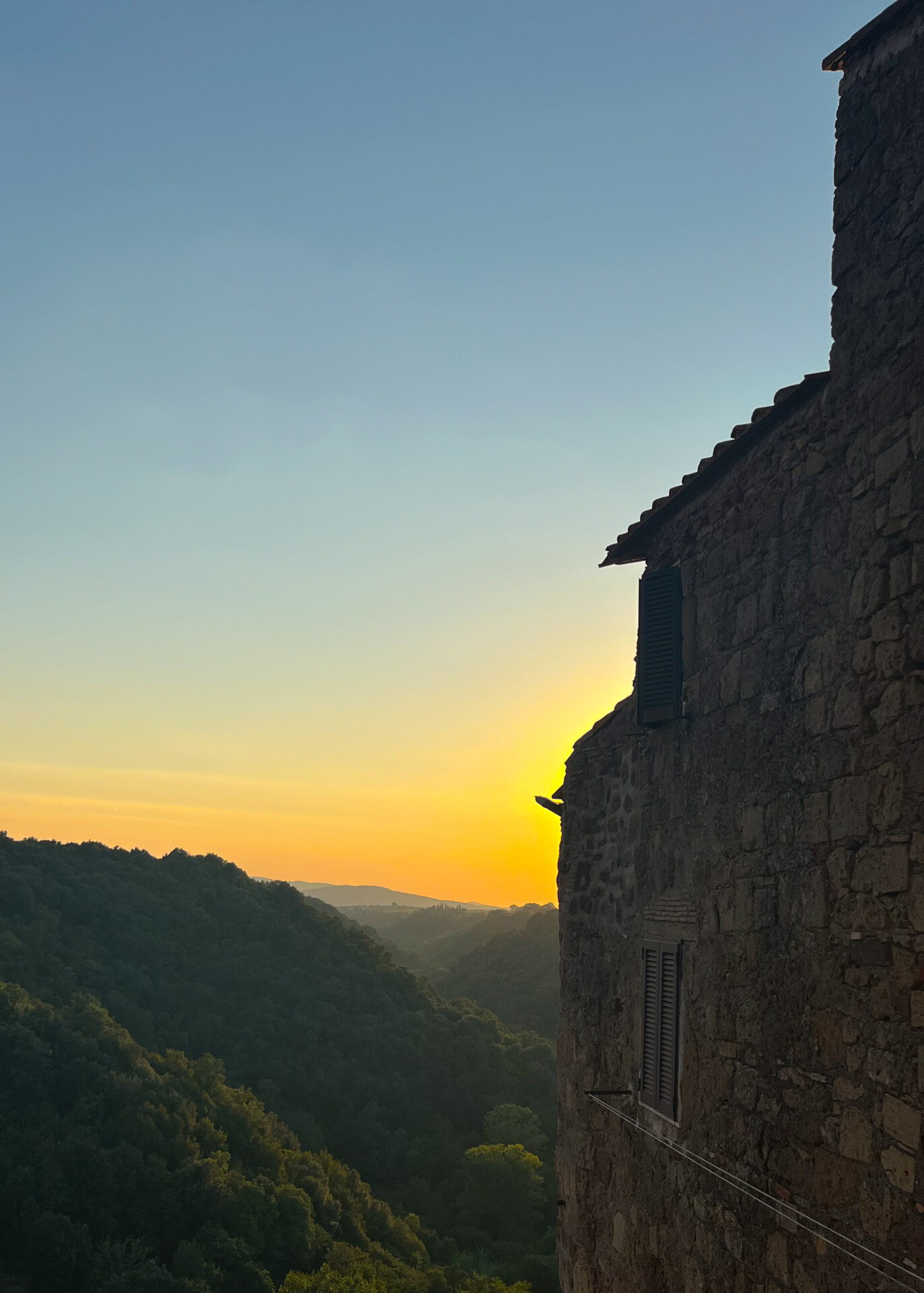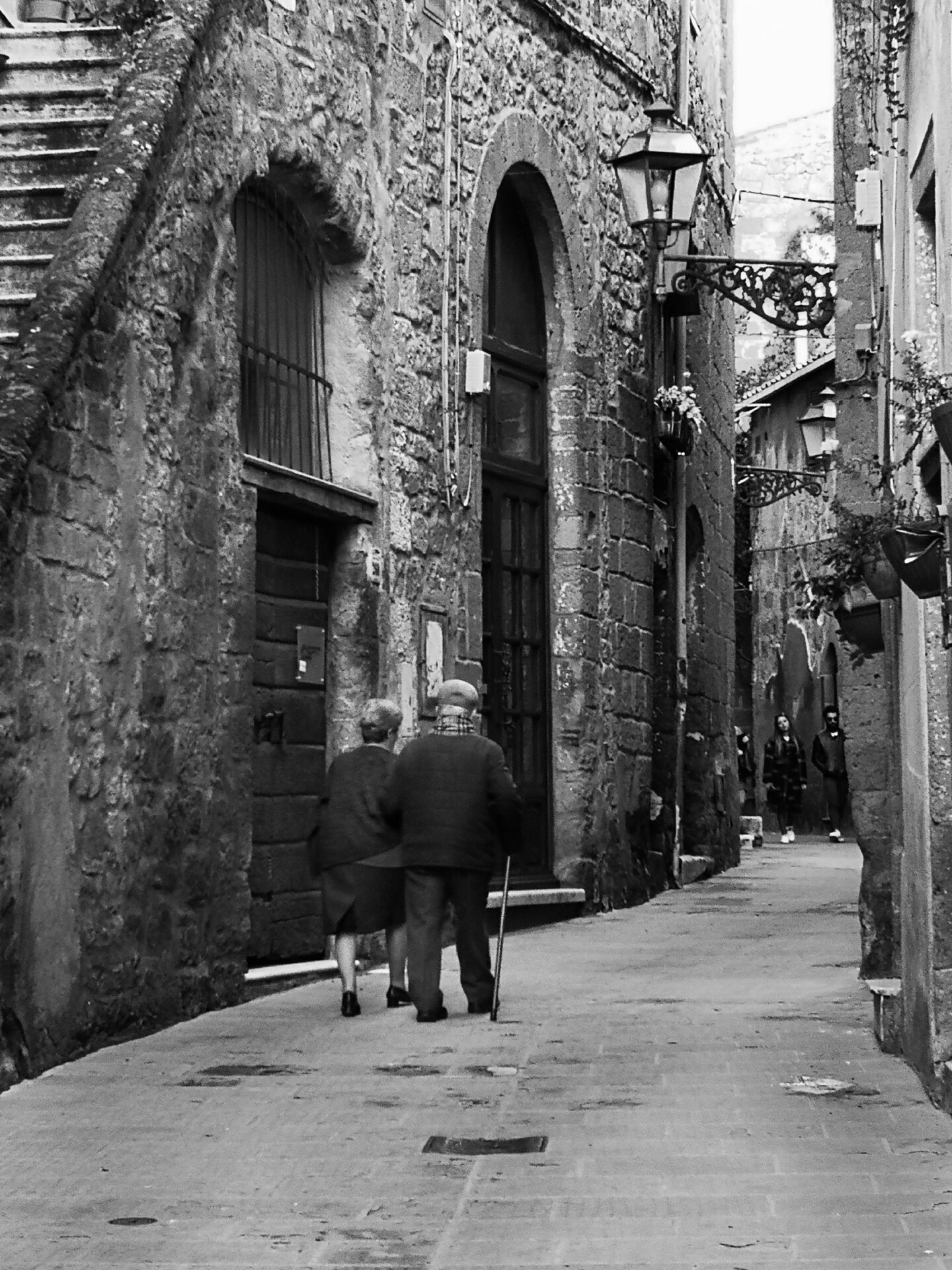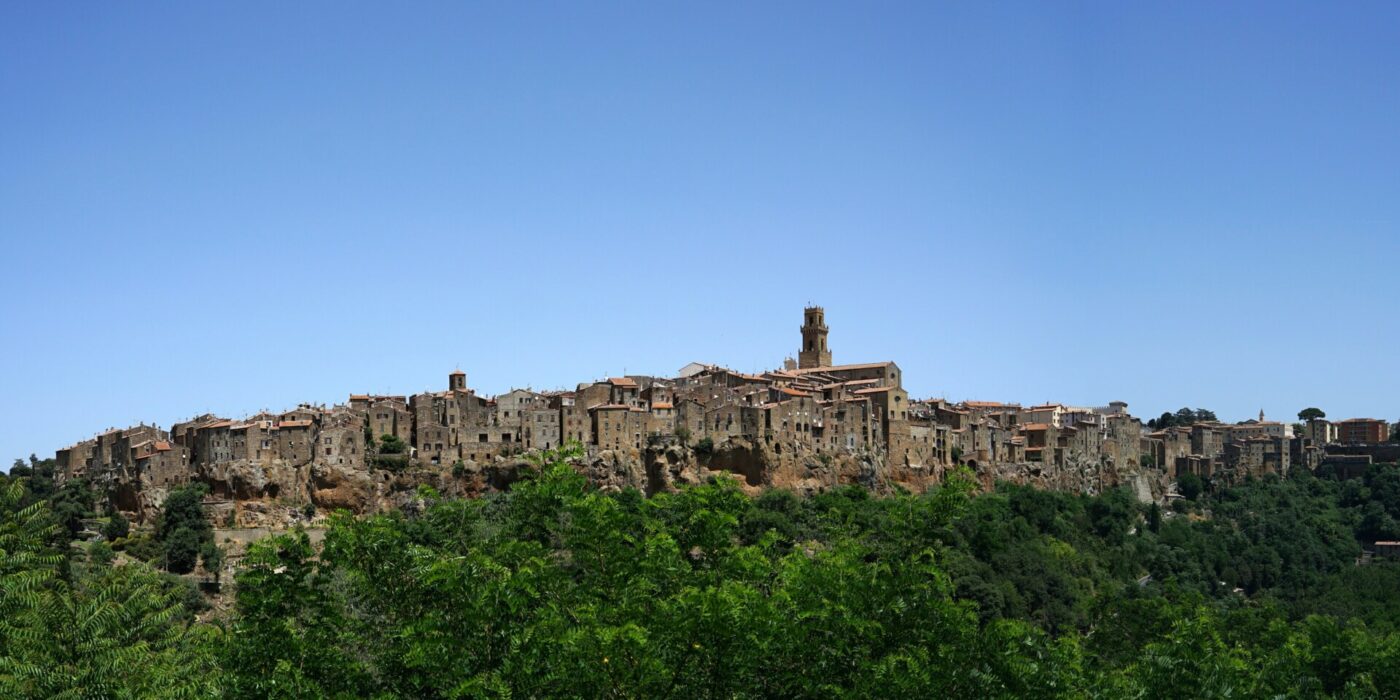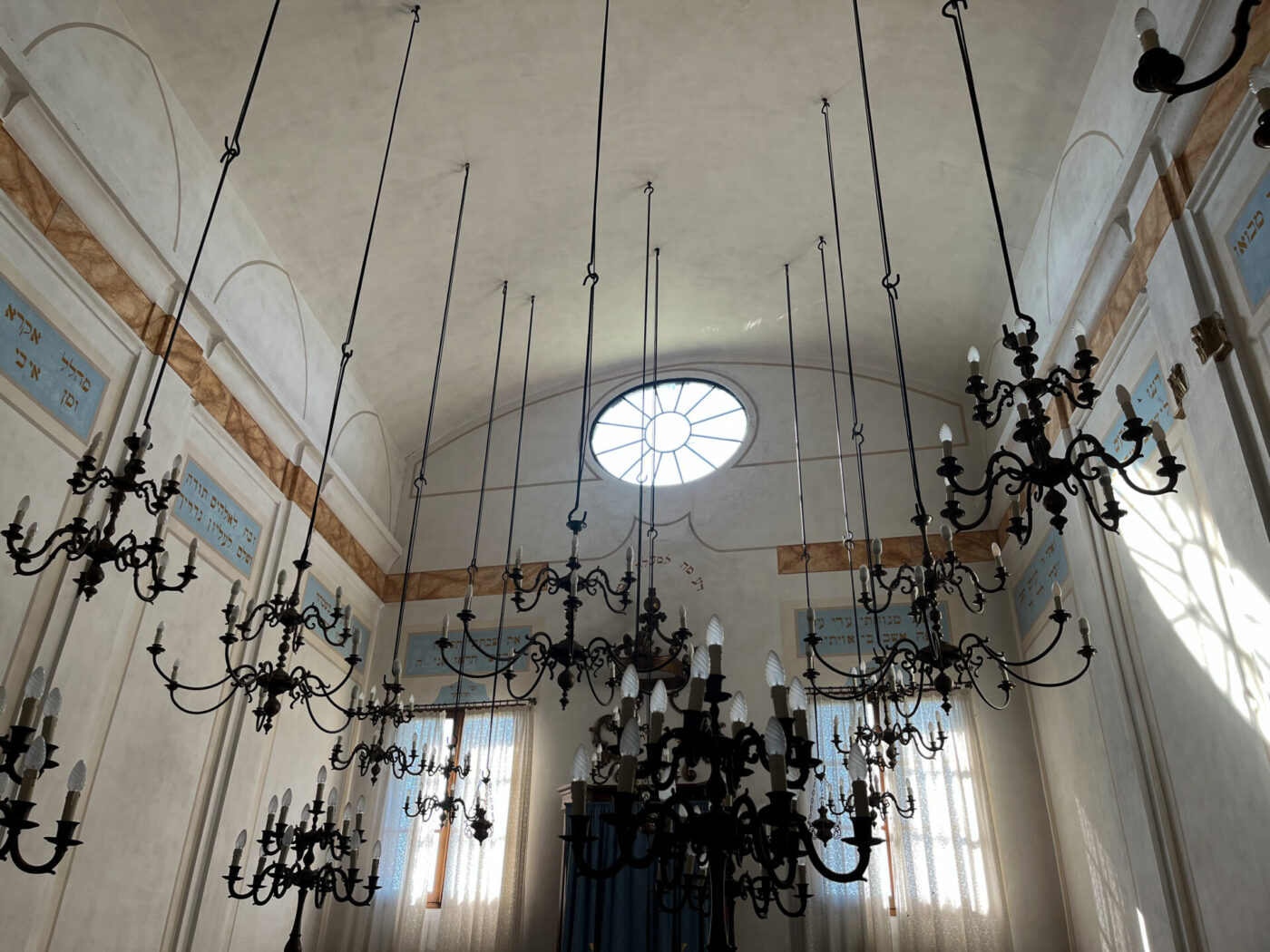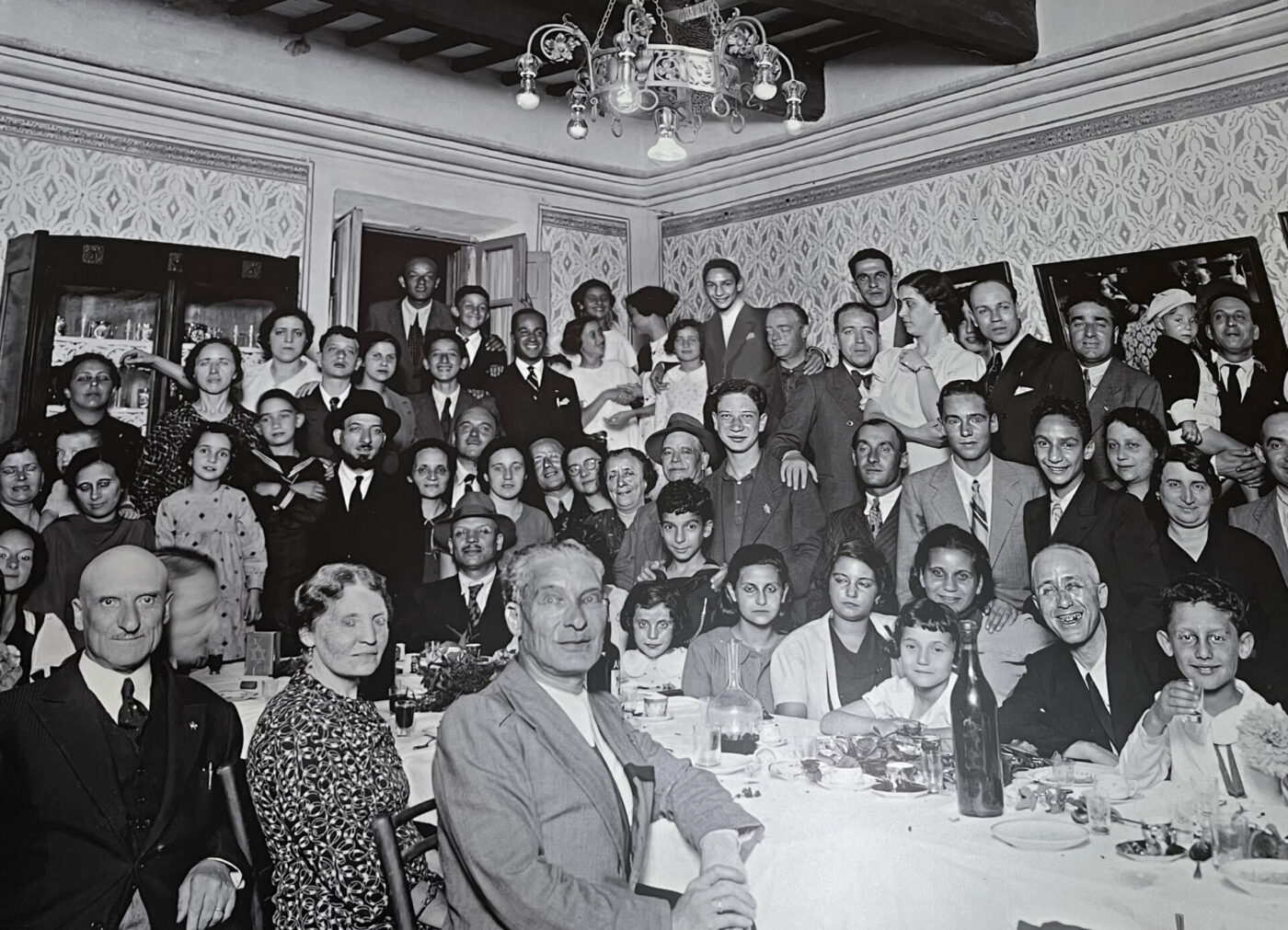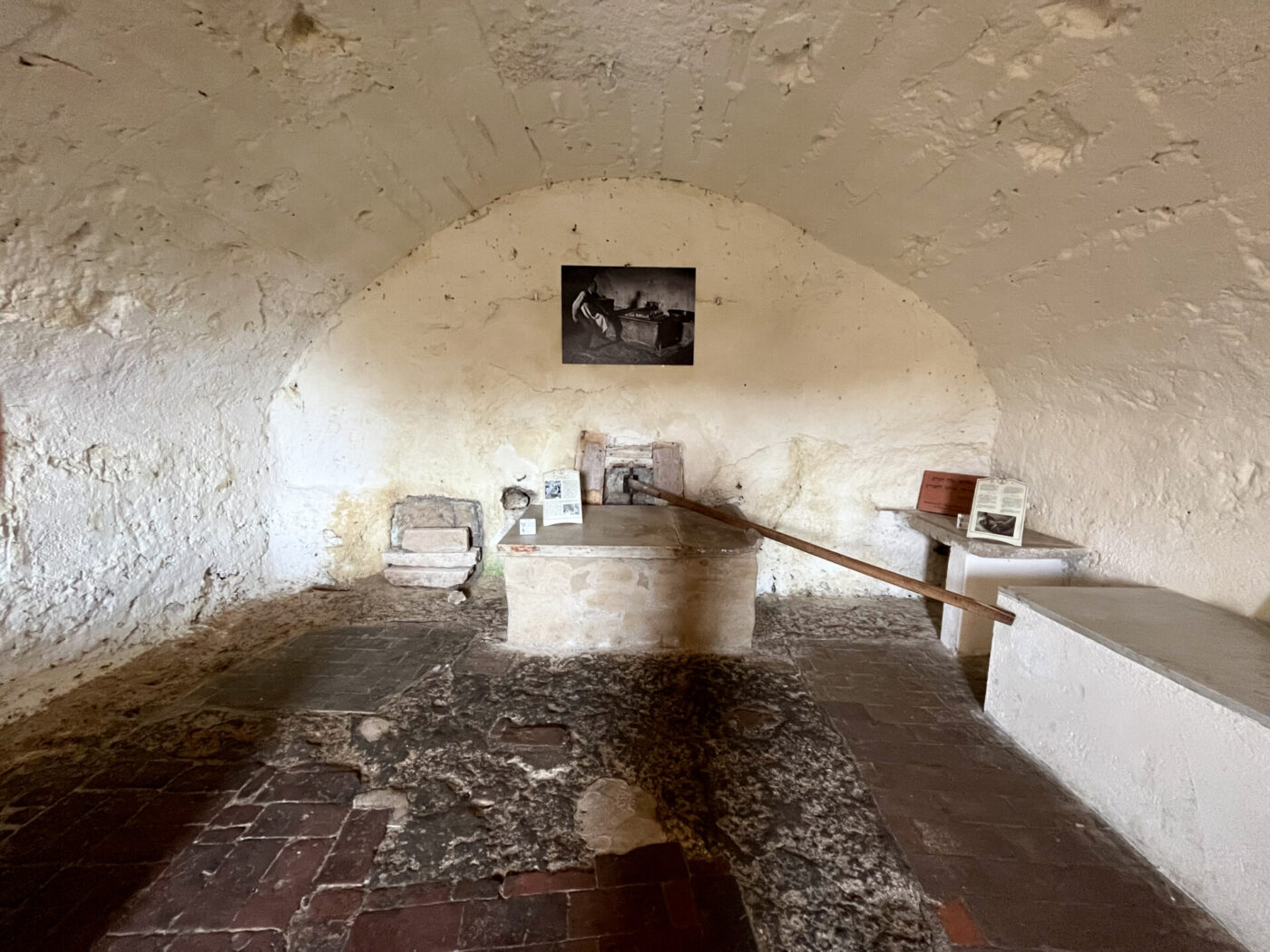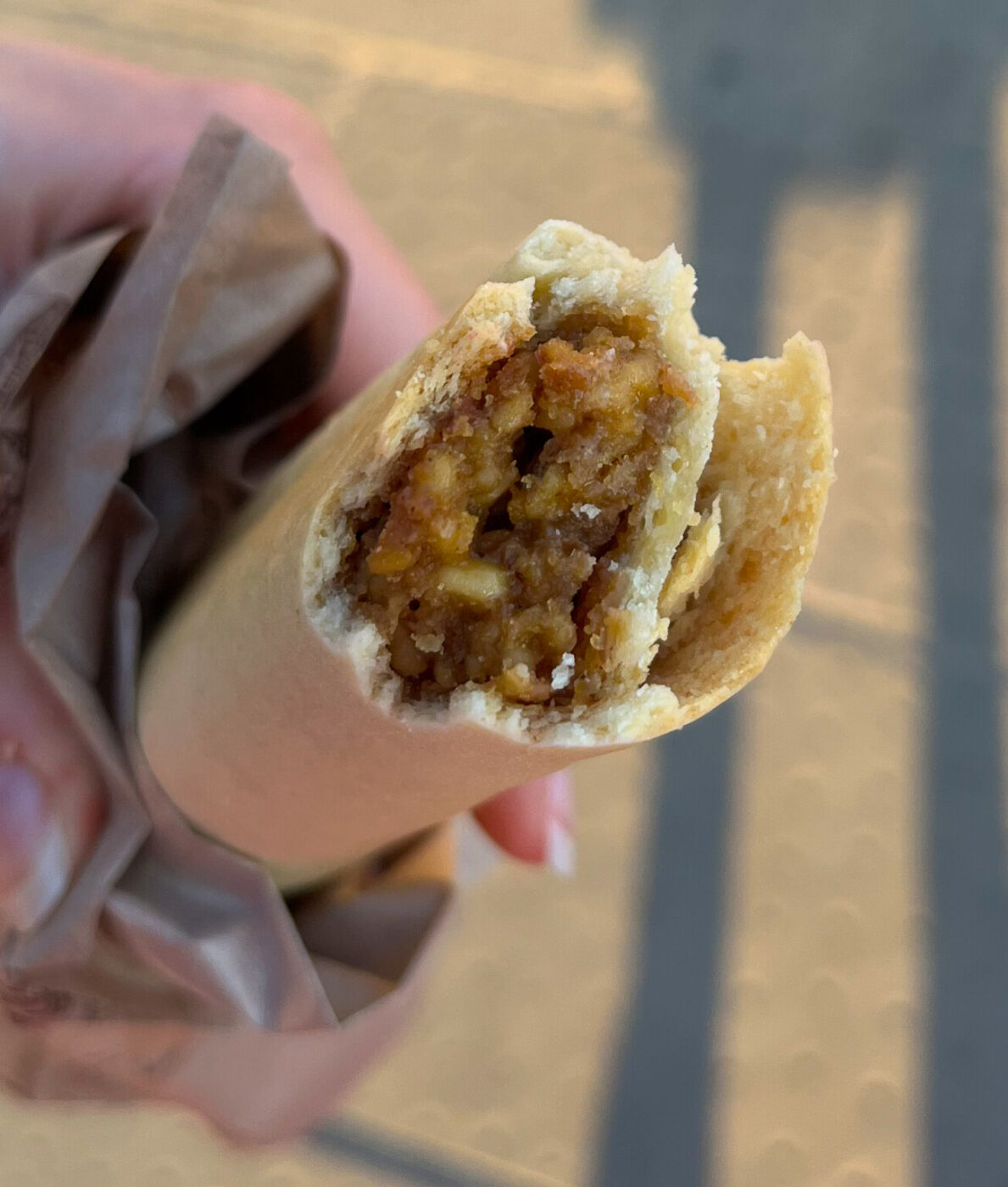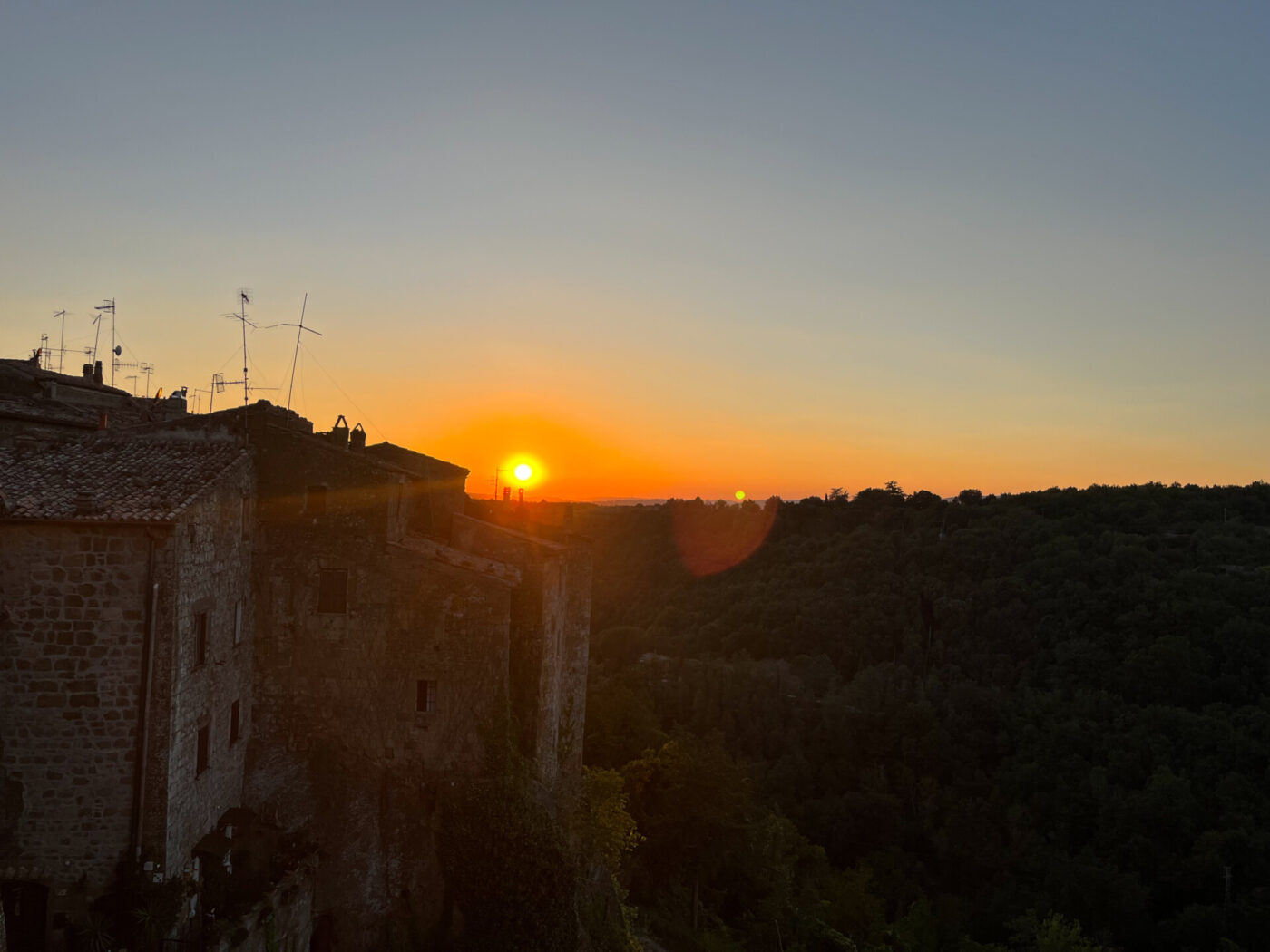Take a trip south of the familiar Tuscan hilltop circuit to the lush forests and wild fields of Maremma, and you’ll find the picturesque coastal villages and beloved thermal springs for which the region is known. Head further inland than most, and the medieval town of Pitigliano awaits.
The town is built from volcanic tuff rock, carved from the cliff on which Pitigliano perches imposingly, overlooking verdant canyons and Monte Amiata on the horizon. A short distance from its sister towns Sovana and Sorano, Pitigliano sits at the intersection of two Italian cultures–Jewish and Catholic–and two borders–Tuscany and Lazio.

I make the breathtaking ascent into Pitigliano with a lingering sense of incredulity at having only just come to learn about a town known as “La Piccolo Gerusalemme” (“Little Jerusalem”) for its historic Jewish community. Like so many others who seek some intangible connection to the Jewish diaspora’s past, visiting old Jewish quarters is a habit of mine.
The late morning light streams through the streets as I arrive at the entrance to the Jewish ghetto. There, I’m greeted by Claudia Elmi who oversees the Museo Ebraico. A large key ring in hand, she unlocks the gate and beckons me in, leading me into the synagogue, bathed in sunlight and silent but for the echo of our voices. Restored in 1995 after years of damage and neglect, it’s no longer in use for worship; the town lacks a minyan, the quorum of ten required to hold a Jewish service. The temple nevertheless remains a sacred space, and Claudia’s reverence is palpable. Though not Jewish herself, she notes that all men visiting must cover their heads with a kippah as a matter of respect.
The synagogue’s plaques are inscribed in Hebrew, Latin, and Italian–a rare and fitting sight as Claudia recounts Pitigliano’s layered Jewish history. Driven from Rome and the Papal States, Italian Jews first arrived in Pitigliano in the late 16th century in search of refuge. At the time, the town was independently ruled by the noble Orsini family, who saw the benefits of welcoming Jewish professionals from larger cities to help develop a region largely inhabited by peasants. So began the construction of the synagogue in 1598 and the consecration of a Jewish cemetery that, to this day, sits outside the entrance of the city.
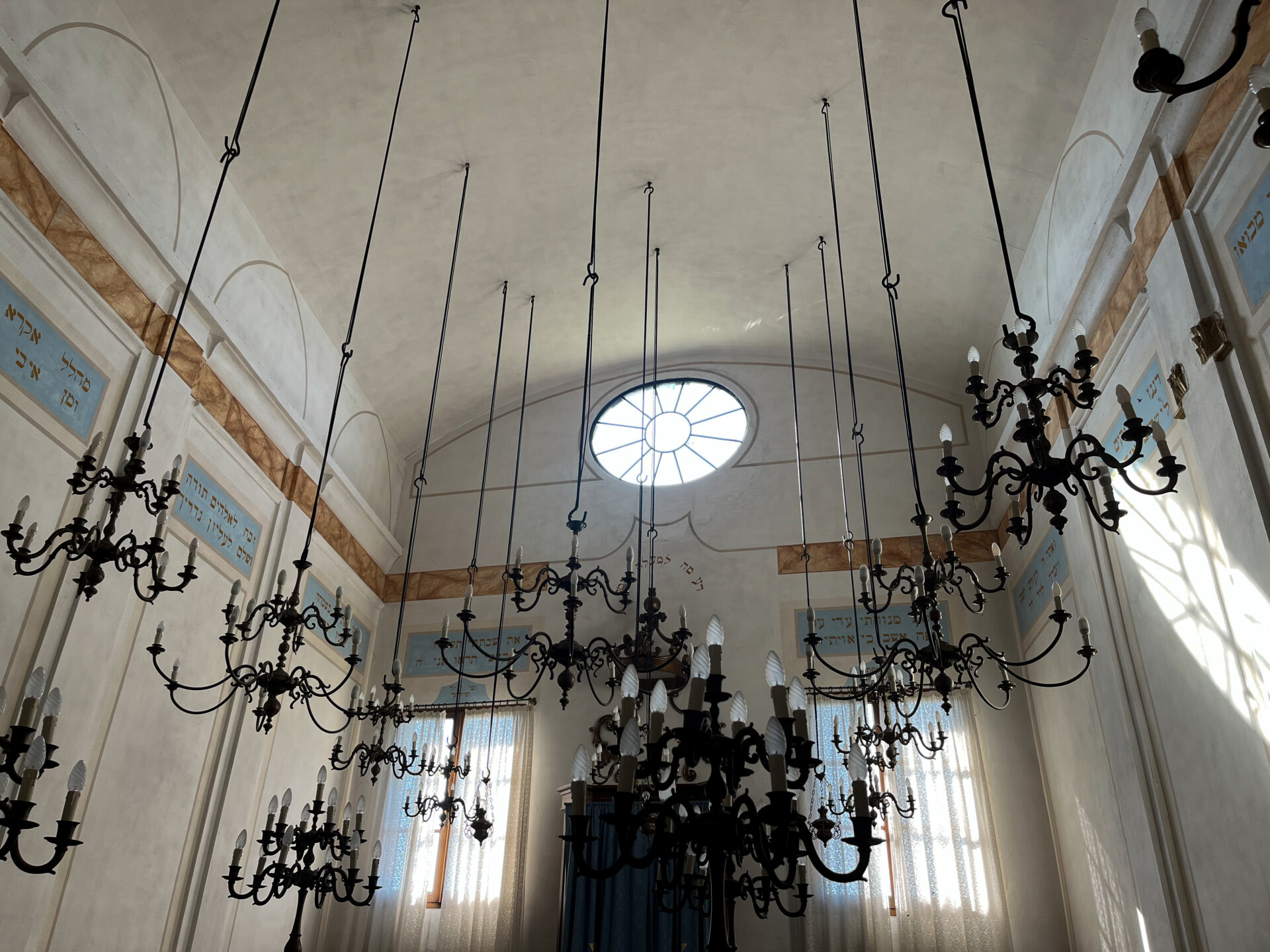
In 1622, the Medici took control of the region and, in service to the Papal States, imposed the same oppressive rule Jews faced elsewhere. A monolithic gate confining the Jews to a ghetto from sundown to sunrise was erected, and the community was prohibited from owning property and practicing most professions. They were forced to wear hats and kerchiefs to mark their faith. So, to expand the limited space afforded to them, those of the ghetto began to dig a cavernous underground city.
In 1799, rioters from a radical Christian and anti-Jacobin gang, referring to itself as the Viva Maria movement, arrived in Pitigliano to attack the local Jews. Their Catholic neighbors rose up to defend the Jews, killing some of the Viva Maria rioters in the process. That same year, the more liberal Grand Duke of Tuscany, Leopold II of the House of Habsburg-Lorraine, recognized the Jewish community and desegregated the ghetto, ushering in a golden era of Jewish life in Pitigliano. By 1850, roughly 10% of Pitigliano’s population was Jewish. Italian unification just a decade later, however, gave members of the Pitiglianese Jewish community the freedom to leave in search of newly accessible opportunities, and many left. Although the population drastically decreased, traditions remained intact on a smaller scale. Nearly a century later, WWII descended on Europe, and with it came racial laws once again disenfranchising Jews in Pitigliano and across Italy. While many more left Pitigliano, those who remained were hidden in the countryside by courageous Catholic peasants at great personal risk. They survived, but most who left never returned and the community shrank further.
Today, Pitigliano’s Jewish community consists of elder Elena Servi, her son, and her nephew. She is the only person with a recollection of Jewish life prior to WWII, and can be spotted in a photograph hung on the museum wall of a bar mitzvah held in the synagogue in 1936. Claudia smiles at the photograph and points out both Elena and her future husband as small children. Her smile fades as she remarks, tearfully: “They didn’t know that everything would change.”
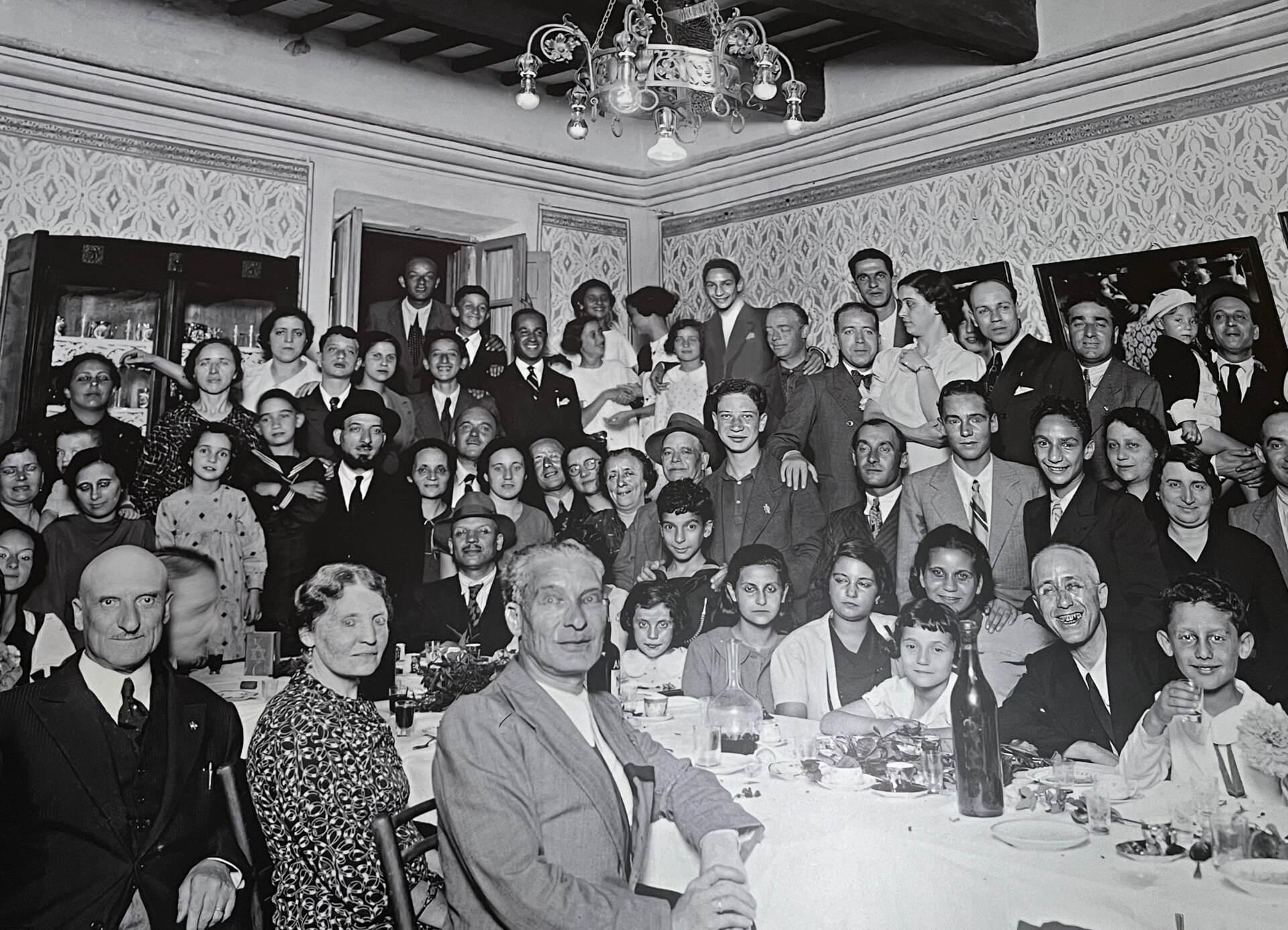
Photo by Adolfo Denci
Elena doesn’t take her role as the “last Jewish nonna of Pitigliano” lightly. A veritable repository of anecdotes, recipes, and traditions, she founded the Associazione La Piccola Gerusalemme, of which Claudia is a member, dedicated to preserving and sharing Pitigliano’s Jewish history through the Museo Ebraico, cultural events, and educational initiatives. Its logo blends a menorah–the Jewish candelabra–with the famous Medicean aqueduct whose arches are carved into the city walls.
Sharing her community’s story widely has been fundamental to Elena’s work, and she was awarded the Order of Merit of the Italian Republic in 2020 for these tireless efforts. Filming a biography (available on DVD for purchase at the museum’s gift shop), cooking with English celebrity chef Jamie Oliver, and educating from school to school are only a small fraction of her labors. As she ages, Elena will pass the torch on to a new generation–though they may not necessarily be Jewish themselves. Claudia is one of the people who has stepped in to fill that role; deeply humbled by the weight of this responsibility, she remarks that the museum is often the only exposure that Italians have to Jewish culture.
As we exit the synagogue and pass through the ghetto’s small square, we descend beneath the streets and out of the blazing sun into a cool, damp labyrinth that feels almost otherworldly. We wander through a maze of fragments of Jewish life–a mikvah, or ritual bath, that used to collect rainwater, a kosher wine cellar and butcher, a leather dye workshop, and an oven used to make matzah or azzime, the unleavened bread eaten during Passover. The space has been out of use for the better part of a century, but for the visitors and restoration workers passing through, the still air is thick with memory. I can almost hear the bustling sounds of artisans at work.
Small windows dug into the cave walls reveal a formidable view of the valley below, and let in concentrated beams of sunlight–incongruous in this cavernous, subterranean space. It’s a paradox that reminds me that the ghetto is not only a testament to imprisonment and life driven underground, but to Jewish resilience and ingenuity. While the entrenched place of Pitiglianese Jews and the support of their Catholic neighbors is unique and remarkable in Jewish history, their displacement and ghettoization is not. I leave the museum thinking about how a place once banished from view of the Christian majority has become the town’s best known attraction.
I return above ground to the summer heat and the sweet scent of baked goods lingering in the air. Following my nose, I find myself at Il Forno Del Ghetto. As I arrive, I see bakers cooling trays of another Jewish hallmark of the town: the famous sfratto (eviction) cookie. These long, baton-shaped cookies are filled with a toffee of honey, spices, and nuts and are wrapped in a shortcrust pastry. The cookies are said to represent the rods used by officers to ram on doors (or to beat Jews, depending on who you ask) in order to force them into the ghetto. (Sfratti keep with the Jewish culinary tradition of imbuing food with symbolism of hardship; other examples include hamantaschen, cookies named for the Purim villain, and the searing horseradish eaten on Passover to recall the bitterness of enslavement.) The version at Il Forno has a doughy crust and a bright orange taste that reminds me of the hamantaschen I ate as a child; although these were my favorite, you can find sfratti in virtually any bakery or specialty shop in the town’s small historic center, with a crisper and sweeter version available at Delizie di Ale & Helga.
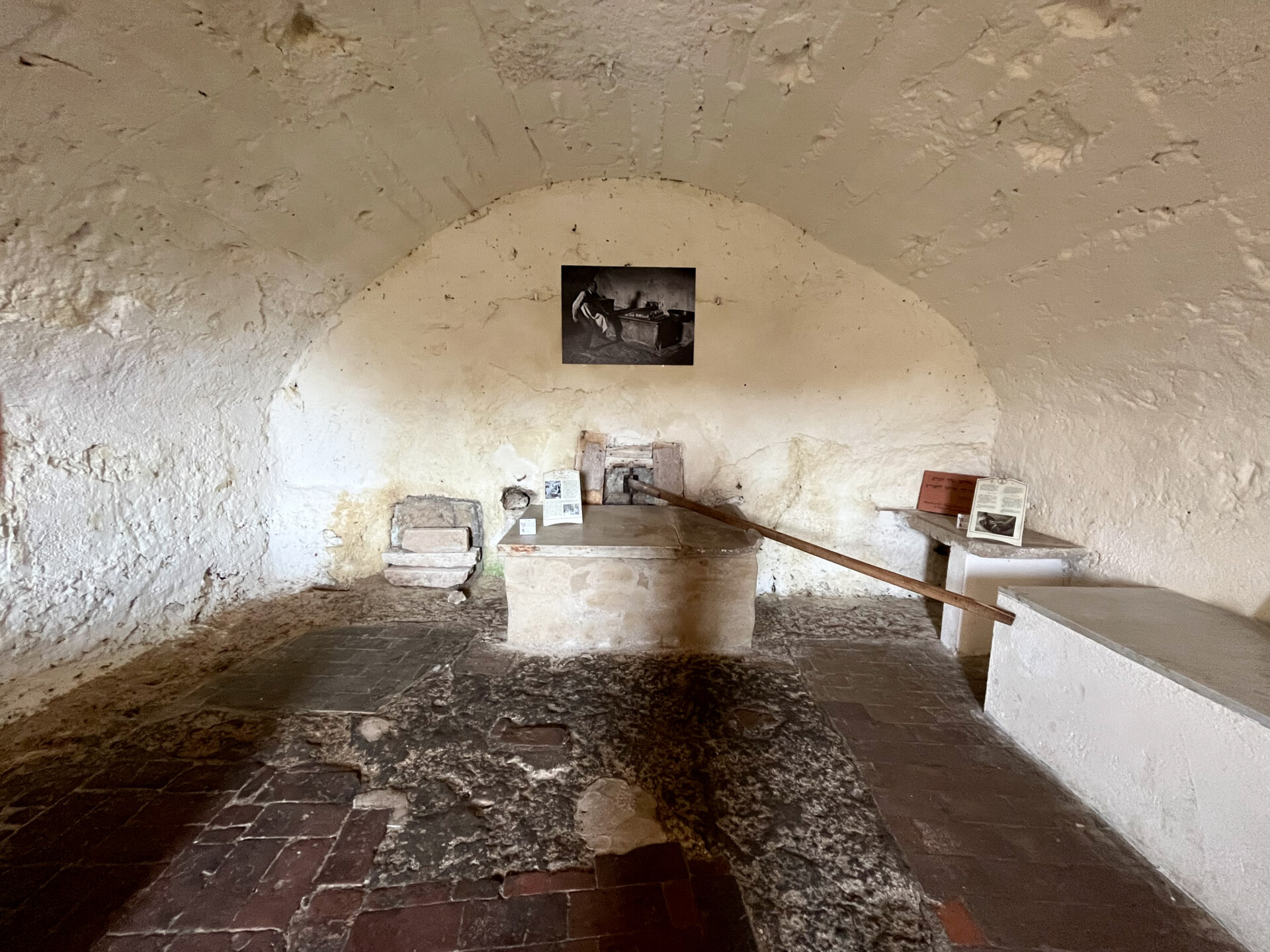
I ask the shopkeeper about other Jewish sweets typical of the region. He directs me first to the crostata visciole e ricotta, a tart with an airy, shortcake-like crust filled with soft ricotta and wild cherry. Next are the tozzetti ebraici, a softer, chewier version of cantucci with almond and cinnamon that finds its roots among Roman Jews. Fans of Jewish baking might find that it resembles a softer mandel bread. Il Forno also sells the most beautiful matzah I have ever seen, in a delicate and lace-like pattern recalling those once made in the underground oven of the ghetto.
Folklorist Steve Siproin of Utah State University has been writing about Pitigliano for most of his career. He explains that stories of sfratti’s legend vary greatly, and that some even believe the cookies were reappropriated by the Jewish community from elsewhere in the region. Nevertheless, they are so significant to the Pitigliano cultural imaginary that their actual origin seems far less important than the stories they carry. Folklore, Siporin says, is remarkably alive in Pitigliano, and local tradition that has died out in most other places thrives here. The popularity of sfratti is a shining example.

Sfratti
After a generous sampling of baked goods, I make my way to the 12th-century Orsini Palace where I find frescoes, princely rooms, jewels, and a conspicuously unlabelled torture chamber. Attached to the palace is a library, where I find librarian and local expert Elisabetta Peri at her desk, surrounded by towering stacks of books.
In addition to her encyclopedic knowledge of the region, from volcanology to the network of Estruscan necropolises and 573 labyrinthine wine cellars hewn into the rock beneath the town, she counts herself as a member of the Associazione La Piccola Gerusalemme. I ask her if we can speak with Elena Servi, whose number she dials. After Elena regales us with Jewish culinary history, citing some of the baked goods I’ve sampled that morning, we turn to the serious topic of legacy. Elena is emphatic when she says that the story of her community must continue to be told. She makes an appeal to young people and adults alike to visit the Museo Ebraico, attend cultural events, and internalize the lessons of her story.
Elisabetta and I leave the library, and she accompanies me through the town’s winding streets, pointing out historical landmarks and her favorite artisans. Because Pitigliano has not fallen prey to mass tourism, most crafts and shops are sustained by Italians and do not pander to tourists. Shops selling ceramics, antiques, carved wood, and fine food dot the streets. At the edge of town is the Porta di Sovana and the Church of Santa Maria, a blush romanesque church first built in the 12th century whose facade dates from the 16th. If you wander long enough, you may even find surprises underground. I find a moody, reptilian exhibit by ceramicist Letizia Transocchi. We stop at Le Macerie del Bombardamento della Seconda Guerra Mondiale, a memorial dedicated to the residents of Pitigliano who were killed in a 1944 bombing by allied forces. The open-air memorial is a multi-purpose space that is put to commemorative, cultural, and educational use–these days, an itinerant library, part of the XXII Festival Internazionale di Letteratura Resistente, is set up.
One of the primary architects of the festival can be found right next to the memorial at his independent bookstore and publishing house, Strade Bianche di Stampa Alternativa. Marcello Baraghini arrived in Pitigliano in hiding as a self-described outlaw because of his activism in favor of divorce, abortion, and civil rights in the 60s and 70s. He settled down permanently in the town after receiving amnesty from the President and devoted himself to the mission of making literature accessible. Stampa Alternativa republishes classics and new texts bearing a “no copyright” symbol that can be purchased at a pittance. I buy a no-frills copy of Epicurus’s “Letter on Happiness”, of which the shop sold a million copies at one euro. “I was poor then and I’m poor now”, says Baraghini, whose publishing makes “food for the mind.”
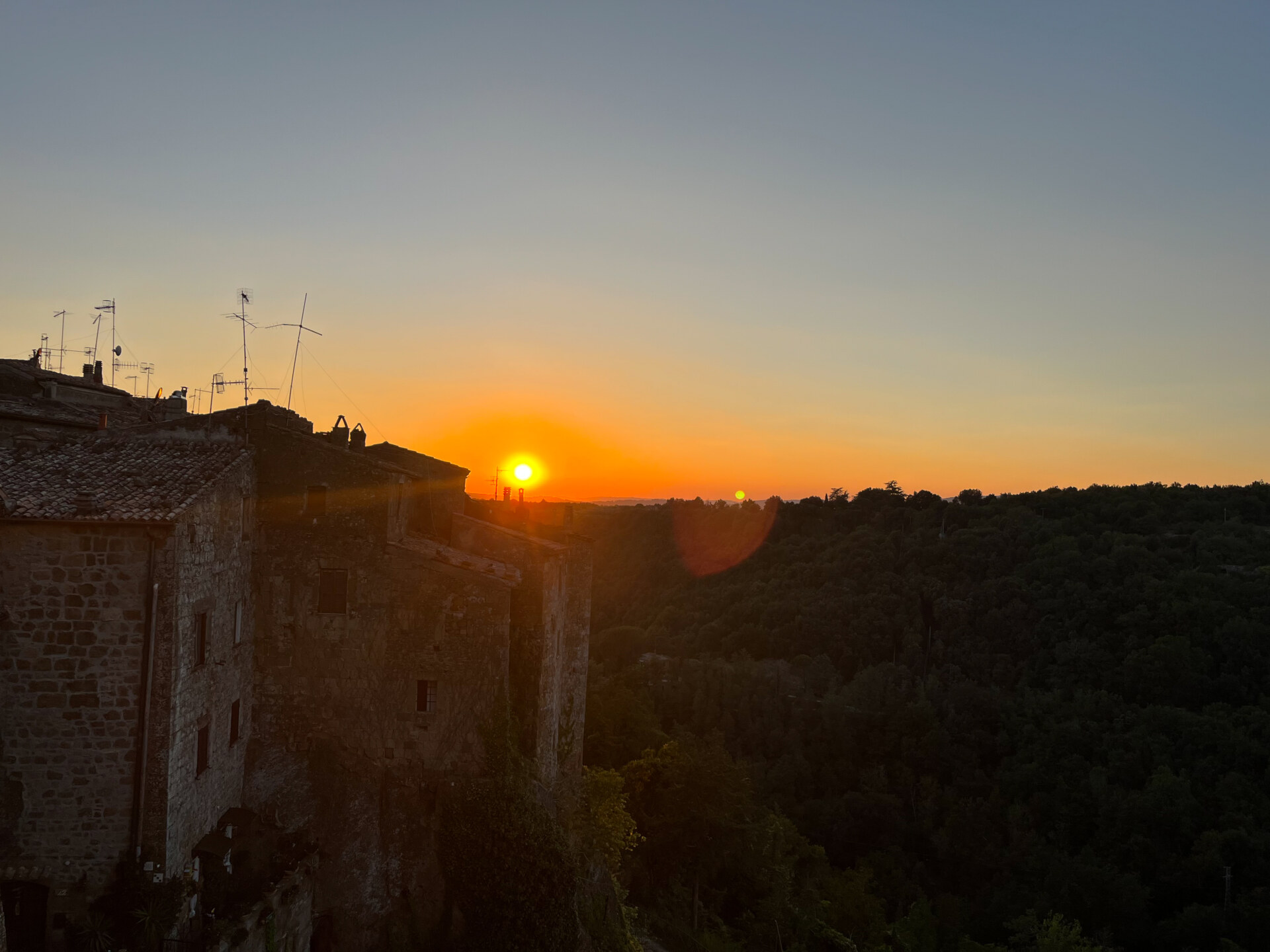
After a long day, I make my way to Il Tufo Allegro, the restaurant of local legend Domenico Pichini. The Slow Food-approved locale is best known for its celebration of regional culinary tradition, highlighting local producers, and its menu boasts an impressive list of small production organic wine and Maremmana classics. The dining room walls are adorned with iconic portraits of Pitiglianese life in the 70s taken by Carlo Fè. (His astonishing collection “Così Lontani, Così Vicini” was published by Stampa Alternativa.)
I chat with Chef Domenico about Pitiglianese cuisine and the products of centuries of Jewish and Catholic coexistence. His insights are comprehensive and anthropological, foregrounding people rather than technique. I learn that sfratti are eaten by Jews in September and by Catholics at Christmas, and that buglione di agnello, a widely known and loved Maremmana lamb stew that can be found on his menu, originates with the Jewish community. My server reminisces about how her Catholic mother would exchange recipes with her Jewish neighbor. I’m delighted by their readiness to share stories of culinary exchange.
Chef Domenico, like so many that I’ve met in Pitigliano, has devoted his life to paying homage to the history of his town. As I walk back to my hotel from dinner, through the Piazza della Repubblica, I peer into the valley through the arches of the aqueduct. Something that Elisabetta said earlier in the day echoes in my mind: “Many people ask me why I care so much about a synagogue when I am not Jewish. My family has been in Pitigliano since 1600. This is my synagogue too.”
Elisabetta echoes the implicit sentiment that is ubiquitous in the town: Jewish history is Pitiglianese history is Italian history. I don’t know whether there will be any Jews left in Pitigliano to tell this story years from now, but I am moved by the dedication shown by so many Catholics who tell it as their own. In a place with a long history of Catholic-Jewish solidarity, this is its latest expression. It is rich with lessons about displacement, refuge, and cultural mingling that, perhaps now more than ever, remain of utmost urgency.
WHERE TO EAT:
Il Tufo Allegro – The restaurant of local legend Domenico Pichini. The Slow Food-approved locale is best known for its celebration of regional culinary tradition, highlighting local producers. Its menu boasts an impressive list of small production organic wine and Maremmana classics. The acquacotta (a peasant soup that feels like a warm hug), pici with parsley foam, and gnudi with a truffled cream sauce are all great. Order ricotta mousse for dessert.
Bio Agriturismo Aia del Tufo – A must-visit by Sorano where rolling hills, sunbathing dogs, and splashing ducks provide the idyllic farm backdrop to the most memorable meal I had in Maremma. Their gnudi are a must-try.
Hostaria Il Ceccottino – Sit on the elegant terrasse under the arches of Piazza San Gregorio VII by the Santi Pietro e Paolo Cathedral. Order their ravioli with nettle and truffle, and find an innovative spin on a number of regional dishes.
Trattoria La Chiave del Paradiso – A local favorite tucked beneath a stone staircase of Via Vignoli and decorated with twinkling fairy lights.
Trattoria il Grillo – A warm, traditional dining room by Piazza Garibaldi that wafts irresistible aromas out into the street. Locals love it and reservations are a must.
